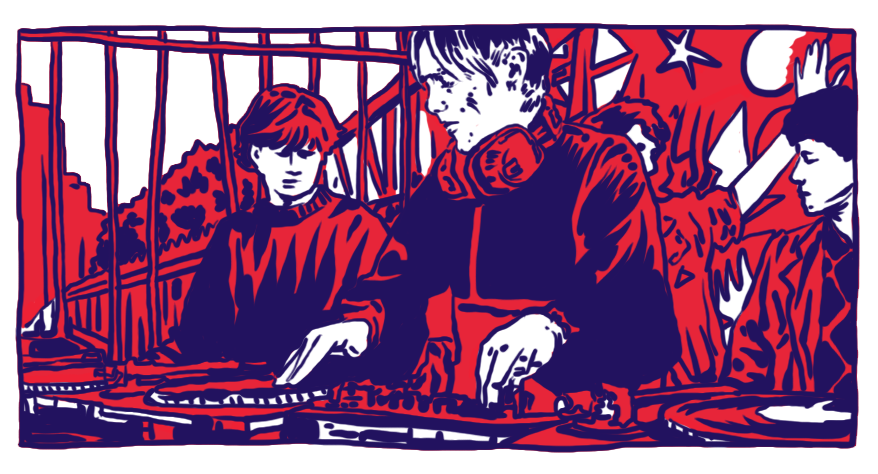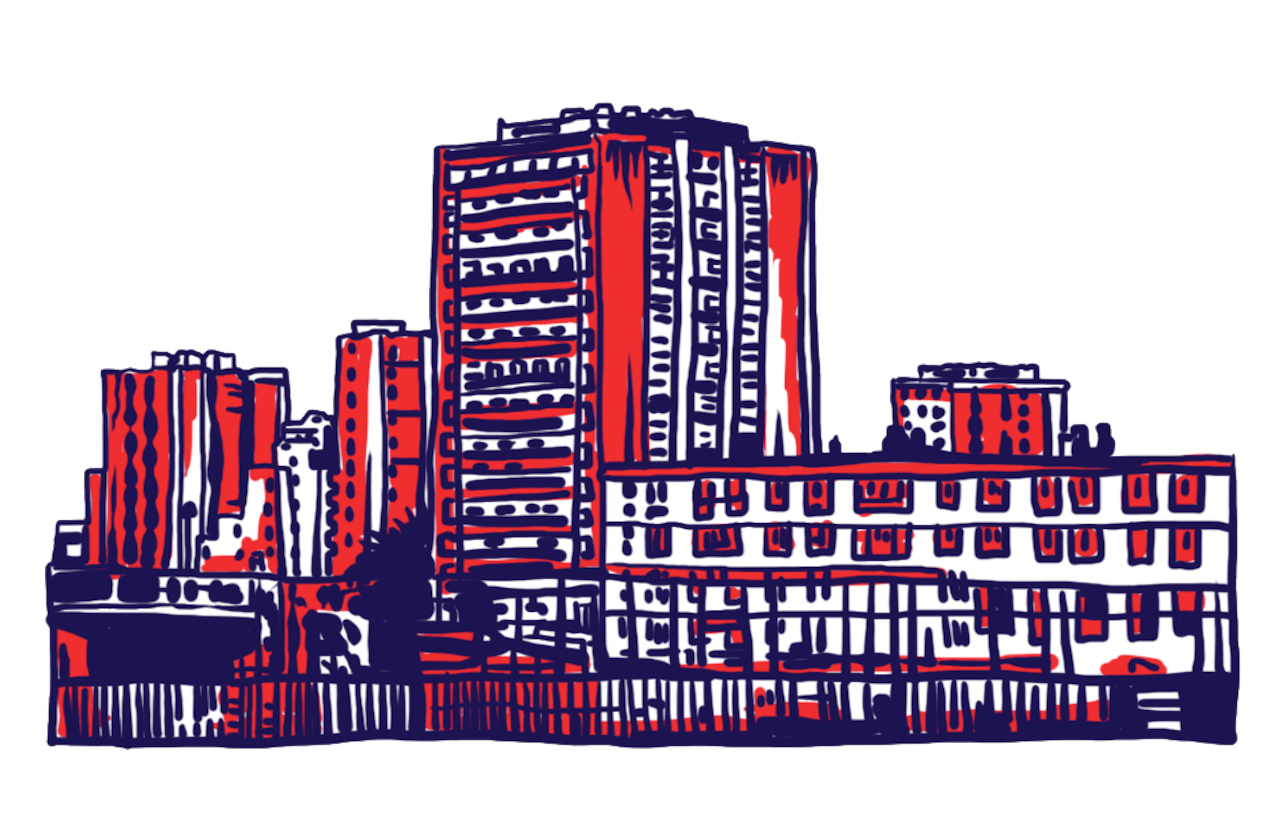
A Brief History of French Hip-Hop
Thomas Blondeau explains how French hip-hop has carved out a unique place in the musical landscape
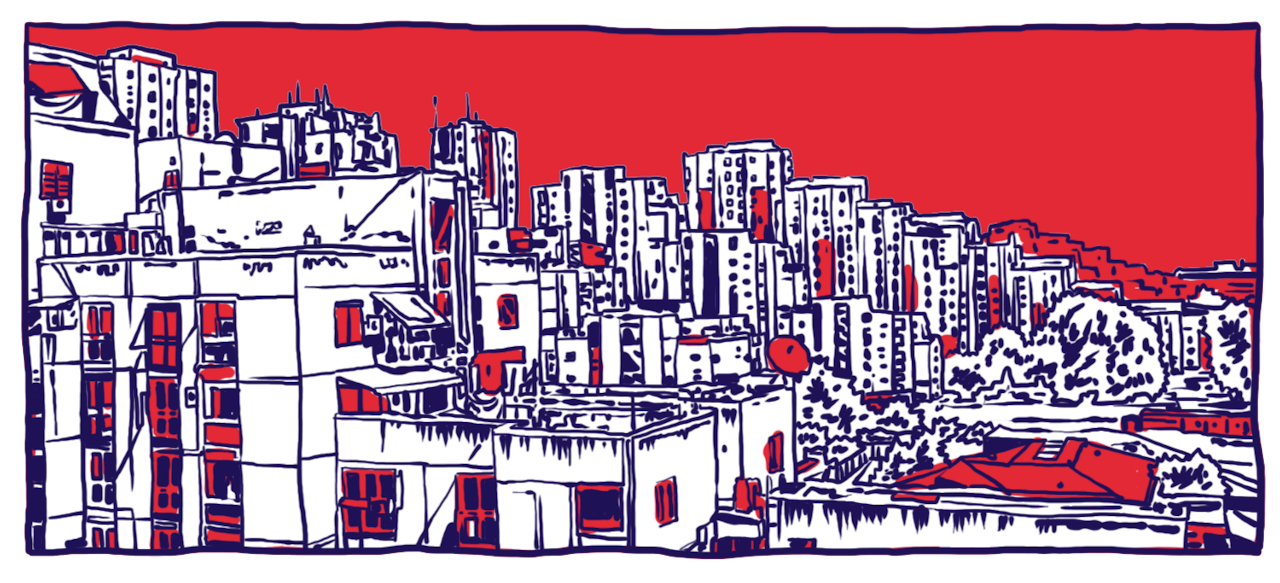

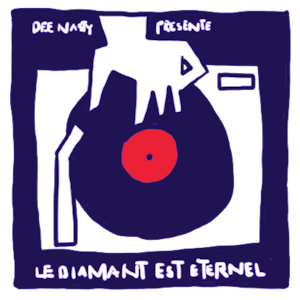
When Suprême NTM entered the studio to record their first album in the fall of 1990, French rap barely existed on record. The music was composed of ultra-tight breakbeats, stacks of sound layers, funk samples and various sound effects, but the sound engineers simply didn’t know how to produce it to the same standard as their American cousins.
Cyril “Reptile” Noton, who worked on the sessions, explains the challenge: “The first NTM, Assassin and IAM records were hectic: very fast breakbeats and basses played in eighths... we arranged it so that the sound levels would be clean and it could be copied, but there were too many different sources; it was difficult to manage. And above all, as a sound engineer, I’d never done that before.”
It was a starting point for a sonic quest that would endure. Over the course of the following decade, French rap would carve out an identity between frustration and creativity, influence and adaptation, inspired by its American cousins, but also against them, or more accurately, against everything.
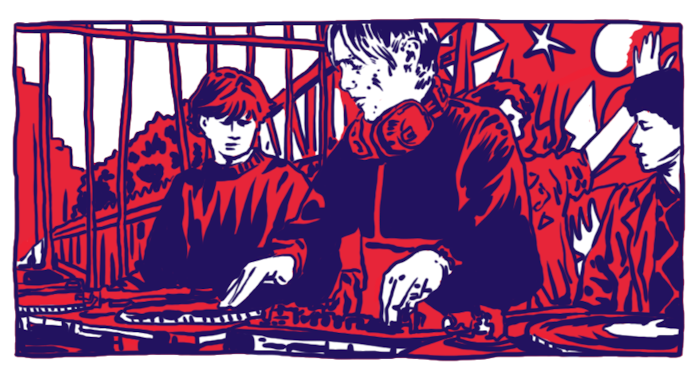
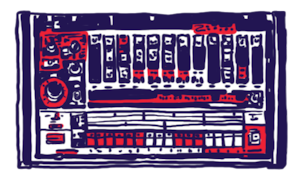
Hip-hop started slowly in France because the equipment simply wasn’t available. “I had to wait until 1986 to buy one of the Technics decks. Only one,” recalls Dee Nasty, a pioneer of the genre. “30 of them per year were imported for the whole country and I had to get a heads up from the guys working at the Fnac electronics store to find out when they were being delivered, because if you weren’t there at that exact time, then you had to wait another year. My mixing desk was a humble BST that didn’t even have a cross-fader. A friend cobbled together one for me with transistors and some solders and I was able start to scratching like on ‘Rock It.’ I was tremendously proud of managing to scratch with that thing!”
The ears of French rap, at the beginning at least, were firmly turned to the United States. It was an obsession summed up by Kool Shen, one half of Suprême NTM: “We thought the more time spent on a mix, the better the track, while sometimes it’s the opposite with rap. Sometimes weeks were spent on a snare drum, a cymbal. Like, ‘Show me this one: Diiiing! The other? Deuuung! Both at the same time? Deuuuiiing! OK, take the first one down a bit – deuiiing!’ For a whole week! Really jerking off! We drove ourselves nuts over details, whereas the Americans controlled the fundamentals: a big bassline, some samples creating a monstrous groove wiping out everything before them. It took a few years to get it.”
“Assassin and NTM were seeking a sonic pressure similar to Public Enemy,” recalls DJ Junkaz Lou, who started out around that time alongside DJ Mehdi, the figurehead of the French rap output from the Mafia K’1 Fry collective. “But ‘other’ French rap also existed influenced by other things, like EPMD, Ced Gee or Tribe Called Quest.”
We literally “studied” American rap. We were interested in the studios, the engineers who’d handled the mixes and mastering.
Connected with the producer Sully B. Wax (Vitry-sur-Seine), the band Les Littles, presided over by DJ Sek, were following the lead of this new school. “We were looking for the soul or jazz aspect, combing the flea markets,” DJ Sek revealed in 2011 to Rap Mag magazine. “We worked from samples, but sometimes added a TR 808 to make the kick heavier, or called on a bassist, feeling our way.” In their search for the American sound, Sully and Sek missed nothing: “We literally ‘studied’ American rap. We were interested in the studios, the engineers who’d handled the mixes and mastering. These details rendered our process increasingly solid.”
In their attempts to duplicate Gang Starr or Group Home, DJ Sek, Junkaz Lou and a handful of others (including IAM or NTM around the same time), got their hands on the SP-12, a sampler/drum machine combo. “It was the hardware for those in the know,” smiles Junkaz Lou. “Only guys who were interested in sound and technology had the SP. And that changed everything.”
While the sound was getting closer to American rap standards, “the real difference lay in the mixing and mastering,” says Junkaz Lou. “The solution was to work with engineers who knew it.” For the mixing of their compilation Time Bomb Vol. 1, DJ Mars and Sek went looking for the guys whose names appeared on the records they liked. “David Kennedy, Tony Dawsey or Carlton Batts... And suddenly the sound was there!”
This obsession with the American sound was long the subject of debate in French studios. The producers blamed the engineers. “Among the French, there was a kind of ‘fear of the basses,’” recalls DJ Sek. “They didn’t succeed, for instance, in bringing the subbass of the TR or the bassline sufficiently to the fore.”
The engineers, meanwhile, blamed the producers. Jeff Dominguez, a sound engineer – who from 1996 had been introducing new life to Ideal J, Oxmo or Fabe productions – reminds that “in Gang Starr, you had a foot and a kick drum, but you mainly had a fabulous sample driving the groove, which blew everything away. So maybe the problem came from the sound engineer but also the producers. Sometimes we were given some rough stuff.”
Continuing, he points out a variable inherently linked to French rap: “The phonetics and inflections of the French language added weight on the mix.” In the opinion of Dominguez, who had on occasion worked on French, American and African vocals. “If you put the voice of an American beneath the snare drum you can still comprehend the words; it operates like an instrument easy to insert into the mix. However, if you put a French voice below the snare, you can’t make out any words. You are forced to bring it to the fore, and bring the kick and the foot up by as much.”
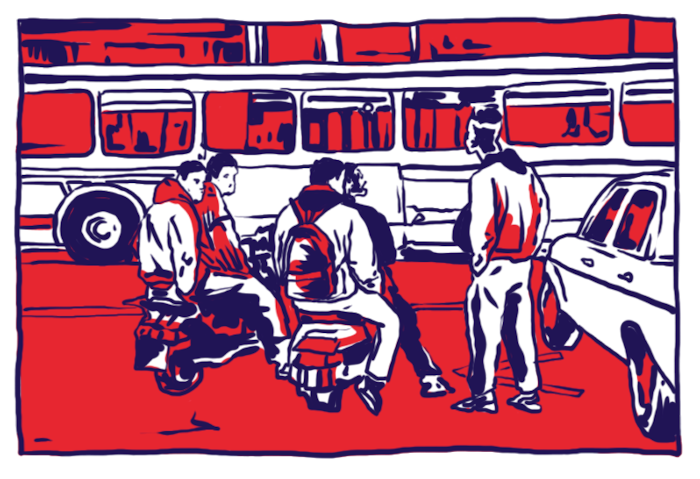

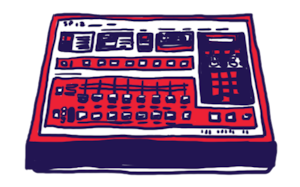
Nonetheless, French lyricists would quickly find their way. By the late ’80s, the Assassin and 93 NTM crews defined – in just a few tracks – a discourse that would exert a powerful influence on the history of French rap. Inspired by the political themes of Public Enemy and KRS-One, the two groups defined a veritable textual creed, a dark red ideological alternative that sometimes seemed like a reproduction of the French Communist Party message adapted for the streets. At that time, rap was the music of leftists in France, with subjects including police violence, the economy – sometimes very precisely detailed by Assassin – and the oppression of the masses.
The themes were directly inherited from Public Enemy, but also the political culture of the French suburbs, known as the “red suburbs.” “My family are Portuguese immigrants, so I grew up in a family atmosphere where politics was discussed all the time. And it’s always on the far left in these suburbs,” recalls Kool Shen. Rockin’ Squat11The creator of the rap group Assassin in the mid-80s, and brother of the actor Vincent Cassel from La Haine fame, son of an actor with a comfortable income, was no less affected by the talk of the leftist intelligentsia going on at home. Passionate, energetic, hurtling unknowingly towards its early successes, French rap was therefore like this “haut parleur d’une génération révoltée prêt à tout ébranler” (megaphone of a rebellious generation ready to shake everything up), as NTM rapped in their first single, “Le Monde de demain” (The World of Tomorrow). Rockin’ Squat sought to converse with society, addressing it and communicating his anxiety, seeking answers and questioning dominant institutions.
Suprême NTM lyrics, like the majority of American groups at the time, assumed messianic form through its grand rhetoric about freedom, oppression, political life and so on. But in the French suburbs, the situation was gradually worsening as the 1990s progressed. If in “le Monde de Demain,” NTM dreamed of taking on the role of loudspeaker, the crew ran up against a wall of incomprehension.
Faced with the social tensions crystallized by NTM, the media machine got carried away, resulting in constant trials and vitriolic opinion pieces. Following the release of the song “Police” in 1993, the group was thrust into what became known as “The NTM affair.” The trial that ensued between the group and the police unions earned the two rappers a verdict with droll wording: “a six month ban on exercising the profession of variété singer.” (A decision quashed on appeal.)
Society didn’t want nothing to do with us, so we’ll keep to ourselves and take care of business.
Also memorable was the surreal dialogue that pitted the two NTM rappers against Eric Raoult – the mayor of Raincy – on the public television channel France 2 one evening in 1996. Raoult asked the group how much money they had reinvested in their borough, provoking the ire of an extravagantly rude JoeyStarr – behavior the media essentially misused to discredit the group. Around the same time, a documentary called Authentique - 1 year with NTM was released, showing how a reporter from France 2 provoked the rapper’s anger during a charged interview. And how that same evening, the TV news broadcast 15 seconds of a furious JoeyStarr without context or clarification.
The whole history of media coverage of French rap lay in these unusually violent exchanges. Political projects and endless justifications were demanded of rappers who were either portrayed as savages lacking correct diction or treated as suburban politicians, thugs with solutions – a media vision that would obscure a share of the artistic work and political discourse underlying rap. If public speaking or participating in the debate constituted an initial engagement, rap’s political vocation lay elsewhere, in the role of fore-warner. On this front, the coherence and progress of early French rappers’ texts – with NTM in the lead – had plenty to warn about. But from then on, any respite equaled compromise.
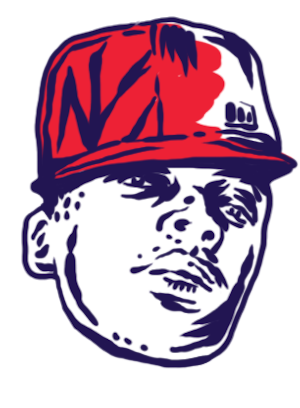
This was duly noted in 2000, upon the release of the first and only album from the duo Lunatic. The social bond was already broken; Rap had become a murmur addressing only itself, or failing that, the guys in the housing project across the way, armed with a coded patois, an infra-underground slang incomprehensible to the layman. Tired of having to constantly self-justify, it returned to its underground, increasingly marginalized, gradually forsaken. The “them-us” paradigm of the Zulus was substituted in the 21st century by “us-us.”
On LIM and PNL records, the ghetto is talking to the ghetto, stories of dealing, the settling of scores, girls alone, brothers in the slammer, cousins crossing the Mediterranean... concrete, sidelines and screams: the soundtrack of a riot. From the dark red protest ground, rap in the 2000s had become a frenzied individualist who decides to reorganize the world according the power of his wallet, and possibly a 9-millimeter. In Booba, Rohff or Lacrim, it was a form of anarcho-liberalism – edged with a bottomless melancholy – coming to light, aggressive and violent, without any cause other than its own. Still, without endorsing the ethics, even NTM understood:
De toutes façons y’a plus d’boulot
la boucle est bouclée, le système a la tête sous l’eau.
Seule issue : la rue.
At the dawn of 2000, young people don’t get the same deal
Anyway there’s no more work
the circle’s complete, the system’s head is underwater.
Only way out: the street.
As NWA responded to Public Enemy, Lunatic countered NTM: “La société n’a pas voulu de vous, alors on va rester entre nous et faire nos affaires” (Society didn’t want nothing to do with us, so we’ll keep to ourselves and take care of business). Lunatic’s sole album is a chunk of social disenchantment, punctured with anger, weighed down by bitterness that doesn’t even bother with exchange. NTM still had a dream; Lunatic no longer had any.

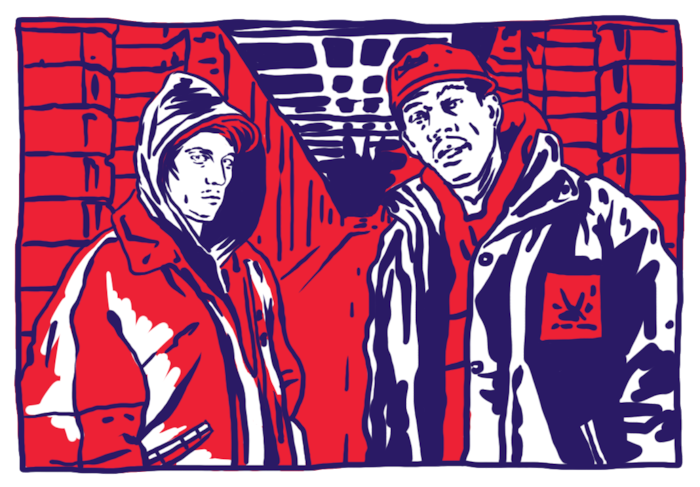
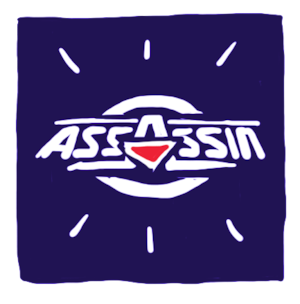
Despite its New York obsession over the years, French rap did not exclusively feed on American attitudes. By the mid-’90s, perceptible behind the beat was a form of melancholy inherited from a certain, extensively sampled, variété française. When, in 1998, Rocca’s simple “Les jeunes de l’univers” (Youth of the Universe) hit the waves hooked to a piano sampled from Michel Berger – one of the greatest variété française composers of the 1980s and 1990s – the relationship was obvious: “This melodic, even melancholic, side developed in France, which is undoubtedly related to the variété genre,” notes Junkaz Lou. “Without necessarily liking it, we’d heard it throughout our childhoods and were permanently marked by it. Berger, Jarre, Brel… it’s a sort of virtually unconscious collective memory.”
Ferré, Balavoine, Dassin, Berger and even Renaud certainly passed regularly between the jaws of French MPCs, gilding albums by Oxmo, Lunatic, Diams and Sinik. For better or worse, this influence cannot be separated from the history of French rap. It is an essential component: “There are lots of examples, either in the underground or the mainstream,” smiles Junkaz Lou. “Ideal J’s first record, for example, is really a mass of melancholy!”
Despite small diversifications in sound, from the West Coast groove of AMER or Aelpéacha to the acoustic productions of Hocus Pocus or the Dirty Southisms of Booba and Mac Tyer, ultimately French rap maintained a clear aesthetic. The sound was typified by a clutch of hits from the Sinik-Diams-Kery James trio, with a square beat robed in a sampled piano and some chords hanging around from the depths of time. “A kind of ‘failed’ East Coast,” hazards Skread, the producer of Diams, Booba and Orelsan, who joined the party in the mid-’00s. “An accidental sound that produced this species of melancholic-rhythmic piano found everywhere in the 2000s.”
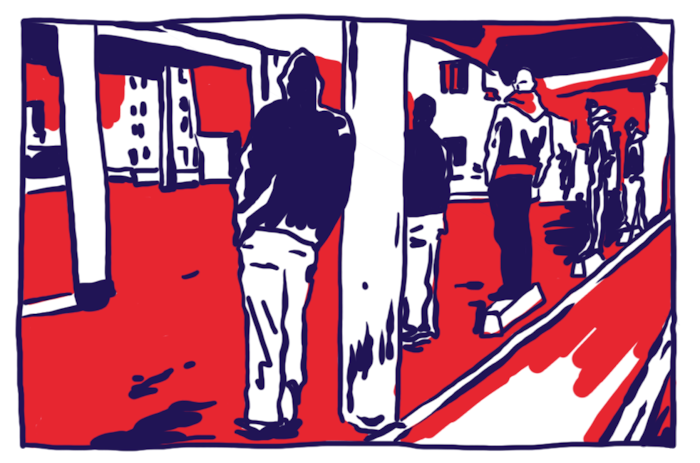
Well, not everywhere. French producers would also become enamored by hits from Timbaland, Jay-Z and The Neptunes as well, and began to embrace the digital path, adding synthesizers and expanders to MPCs featuring almost unlimited sound libraries. “In the 2000s, the novelty was that fewer samples were used,” explains Skread. “Dirty South, which is full of synths, weighed heavily on this style of composing. That brought back little melodies played on one finger, the gimmick.” This development was actually the source, at the time, of great diversification, expressed back then in the quasi-electronic productions of TTC, Hustla and the free spirits at the De Brazza Records label.
The TTC trio were ahead of their time, weaned long before the majority of their compatriots on the tones of the Dirty South. Their quasi-electronic productions featured cavalcades of sparkling hi-hats and wild synths. At that time, TTC had not intended anything other than a “pop” hit, a word still considered crude in the world of rap production. They wanted to take rap back to the club by carving out a sort of middle road between Company Flow, Disco D. and The Neptunes.
At the time of our first album [in 2002], we soon lost interest in independent American rap because it was starting to go round in circles.
“At the time of our first album [in 2002], we listened to a lot of independent American rap, little known, pretty specialist stuff, but we soon lost interest in it because it was starting to go round in circles,” explains Téki Latex. “So we returned to more mainstream things like Timbaland or Lil Jon, the most exciting stuff being produced then. The music of indie labels like Rawkus that we used to listen to seemed locked into clichés in the late ’90s, with a ‘music credibility’ quality, a bit dreary, a little cultish. El-P started playing with jazz musicians – hellish! The authentic side became exasperating, conservative, while Timbaland and Ludacris were doing innovative, more experimental things in the mainstream than most of the New York indie crowd.”
At the time, this alternative was considered heretical by proponents of a definite French rap creed, but it would eventually reach the mainstream alongside the intercontextual experiments of Grems and his various dubstep, house and ghetto-tech influences. In fact, it’s interesting to note that many producers armed with hip-hop backgrounds would muddy the waters by moving towards electronic music production during this period, including the likes of DJ Mehdi (Mafia K’1 Fry), Para One, DJ Detect, DJ Pone, Gero and Feadz.
The increased access to software has had its downsides. In 2008, Oxmo Puccino, a defector from the Time Bomb era, explained it thusly: “I [recently] ended up working with musicians because I was tired of listening to hundreds of instrumental CDs where guys used fake synths, fake samples picked up from MP3 discs. They were just jerking around!” Skread, who has worked extensively with keyboards, qualifies this upsurge: “It’s simultaneously a strength and a problem. Software is available via the web, so anyone who has an ear and a good computer has the same chance as anyone else. The problem is that as soon as something works, it’s everywhere. The synth of ‘Love In This Club’ from Usher is, for instance, an arpeggiator available on the Logic software.” However, some have been able to manage these technologies brilliantly. Current producers like Tefa and Masta, Swat, Wealstarr and the Animalsons duo regularly brush the top of the charts.
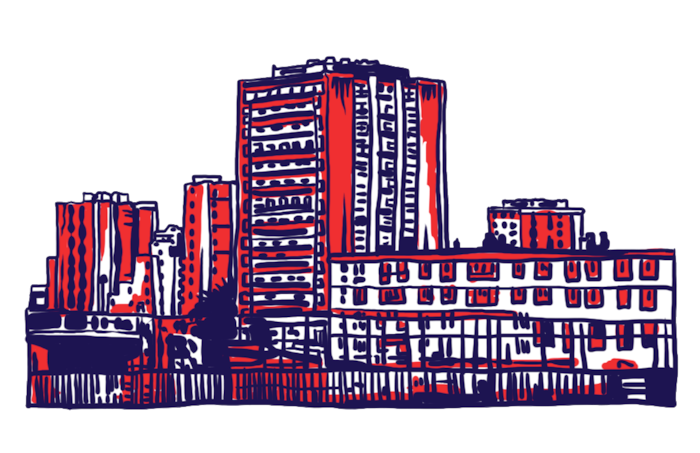

Though there’s little in common between the first NTM and the most recent Booba, French rap still carved a direction for itself in just 20 years, if not a wholly unique sound. “Ultimately, the drama of French rap is that we still haven’t invented it. It’s easy for the Americans, since they are the ones who created the aesthetic,” acknowledges Junkaz Lou, “but we had to adapt it. Inevitably there’s the ‘copying’ aspect, but that doesn’t stop us from being huge. S’okay!”
Lyrically, things are much further ahead. Even if, in 2015, French hip-hop is a little bit like the latent schizophrenia of a child of divorce, a genre where individualism rubs shoulders with a desire for altruism, where overblown references of respect for the backbreaking pasts of parents coming from North Africa to work in French factories coexist with absolute contempt for all social cohesion and any legal work. French rap right now is a peculiar entity impossible to grasp on a political spectrum. It’s outside of political parties, against the system – against everything, in reality – but paradoxically perfectly integrated to global merchandising.
Now, artists like Despo, Gueko, Nessbeal, PNL and Lacrim know no limits, neither targeting singles nor the poetry that an out-of-step literary France always wanted to see from them, but, paradoxically, revealing a creative ferment and semantic inventions among the most relevant of their time. The French ghetto invented something other than the “well-written” lines demanded by the high school diploma. Happily, PNL does not write like the poet Ronsard!
Enemy forever of the established order, simultaneously concealing an equally harsh moral code, it shoots down whosoever dares approach – ultimately, French rap is as paradoxical as the society that spawned it. But it cannot build solely upon frustration. Come from elsewhere, it is here. Here and now.
Header image © Elena Gumeniuk
